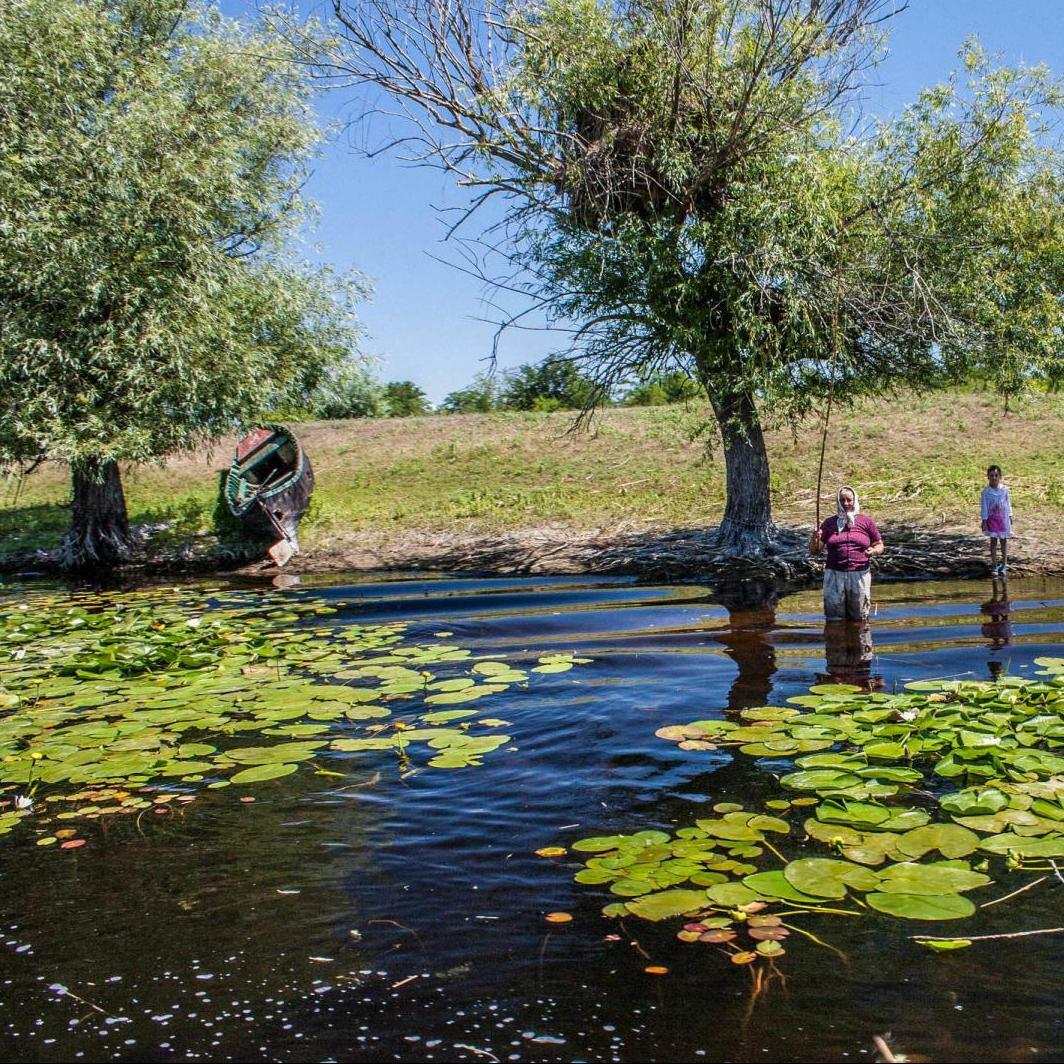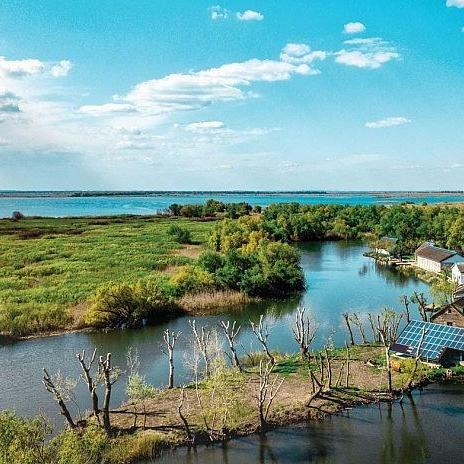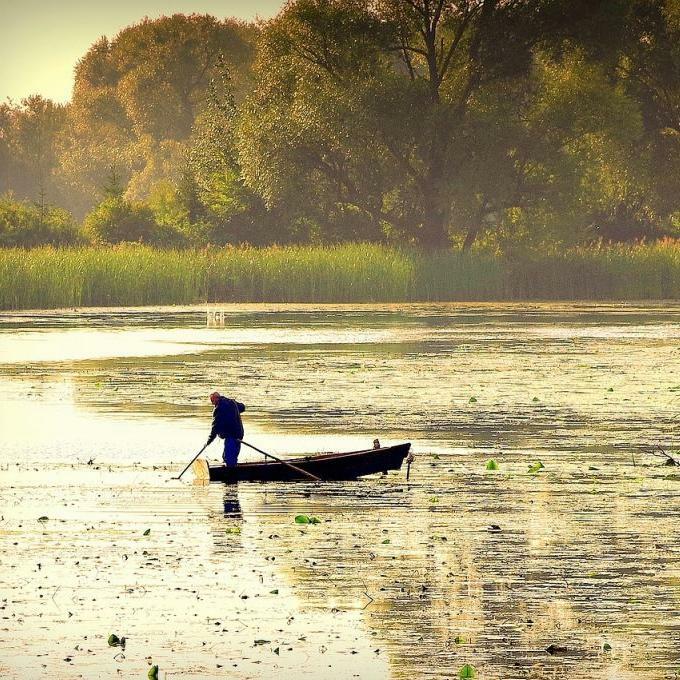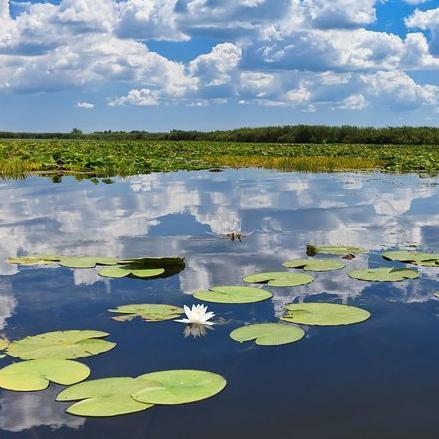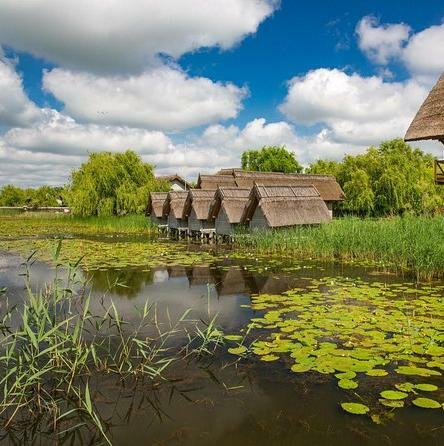Description
THE DANUBE DELTA
The Danube Delta is a treat of flora and fauna, seasoned with the most beautiful landscapes of this type in our country and beyond. For that reason, the Danube Delta is known as the only delta of such beauty, attracting an impressive number of tourists every year. Over time, this has favored the development of tourism in itself, and also the construction of hostels and hotels meant to host the tourists in search of a vacation in the heart of nature.
Business boomed soon, and the Danube Delta has now become the ideal destination for a nature vacation, away from the bustle and smog of the city. Here you can see rare species of fauna and flora, and also extraordinary species of fish.
LOCATION
The Danube Delta stands between the Dobrogea Plateau to the south-west and the border with Ukraine to the north. As expected, it meets the Black Sea to the east, as the three branches of the Danube flow into it. This is actually the reason why this oasis of nature is called a Delta, and not just any Delta, but one of the most beautiful of its kind. As specific geographical coordinates, the Danube Delta is crossed by the 45th parallel north, and by the 29th meridian east, so upon close inspection of the map, following these coordinates, it is impossible to miss it, even if you are not a Romanian citizen or not very good at geography.
SURFACE AREA
The surface area of the Danube Delta is approximately 5,050 square meters. However, it is worth noting that this area belongs both to the Delta and to the Razim-Sinoe lagoon complex. It is also good to know that of this surface area, 723 km belong to Ukraine, so by subtracting this number and the surface of the Razim-Sinoe lagoon complex, the Romanian Delta covers a surface area of 2,540 square km. Nevertheless, we may have even more delta soon, because every year, the Danube brings along silt as it flows into the sea, so each year, the Delta grows by 40 square meters.
THE BRANCHES OF THE DANUBE
As you know, next to the town of Patlageanca, the Danube splits into two branches called Chilia to the north and Tulcea to the south. The latter branch, Tulcea, subsequently splits into two other branches, Sulina and Sf. Gheorghe (Saint George, N.T.), the latter deriving its name from the place where it is created. Going back to the Chilia branch, it is good to know that this forms the actual border with Ukraine. Another important element concerning the Chilia branch is the fact that it carries approximatively 60% of the water and silt of the Danube, having a total length of 104 km.
Unlike Chilia, the Sulina branch is located in the center of the Danube Delta, and has a linear flow. Its main utility is for navigation. The Sulina branch is 71 km long and carries approximately 18% of the Danube’s water and silt. As for the Sf. Gheorghe branch, it has a north to south orientation, it is 112 km long and carries about 22% of the Danube’s flow. This branch is unique in that when it flows into the sea, it forms an island complex called Sacalin, which is considered a kind of secondary delta.
In terms of its actual location, the Danube Delta is part of Dobrogea, but there are also some exceptions here concerning the Chilia branch and the above-mentioned secondary delta.
The Danube Delta is well known for the complexity of its ecosystem, and is at the same time an ever-changing environment. Hence, here you can admire at the same time “old forests”, with trees over 1,000 years old, as well as “new forests”, the most famous ones being the Caraorman and Letea forests. Here you can see sand dunes over 7 m tall, oak forests over 30 m tall, lakes covered in white lotus flowers, floating islands. The Danube Delta harbors the largest area of compact reeds in Europe.
Here await extraordinary plant species such as the sand bush, vines with exotic origins (this is their northernmost limit), plants with floating leaves, rush, watercress, marsh ferns, poplars, alders, ash trees, white willow trees and many more. According to research, there are about 1,600 plant species in the Danube Delta. That is why, the number of tourists who come to admire this natural display up-close grows each year, especially people coming from countries along the Danube.
GEOLOGY
From a geological perspective, the Danube Delta is located in a flexible and mobile region of the earth’s crust called the Danube Delta Platform, or the pre-Dobrogea region. This region comes in contact with the North-Dobrogea Orogen by means of the Oancea-Sf. Gheorghe fault line.
FLORA AND FAUNA IN THE DANUBE DELTA
There are over 30 ecosystems in the Danube Delta, with 5,137 species, of which:
- 1,689 species of flora
- 3,448 species of fauna
- 86 species of mollusks
- 2,219 species of insects
- 125 species of fish
- 10 species of amphibians
- 11 species of reptiles
- 325 species of wild birds (pelican, cormorant, egret, black-tailed godwit, duck, common coot, grey heron, purple heron, squacco heron, night heron, sandwich tern, seagull, glossy ibis, black-winged stilt, common pied oystercatcher, common kingfisher, European roller, bee-eater, common spoonbill)
- 42 species of mammals (boar, roe deer, raccoon dog, otter, muskrat, fox, mink)
It is also worth knowing that there are about 384 protected species in the Danube Delta, of which 4 are plant species.
USEFUL TIPS ABOUT THE DANUBE DELTA
Mosquitoes in the Danube Delta are the tourists’ greatest enemies. More bothersome during the summer months, they must be avoided in the mornings, at sunrise and 2-3 before sunset, after which time they disappear among the leaves. The presence of mosquitoes is reduced when it is windy or raining. Therefore, avoid areas of heavy shade or low air circulation, especially at dusk, make sure that your accommodation space has tightly woven nets at the windows and use insect repellents (pills, coils or spray such as OFF, AUTAN etc).
Regardless of the time of the year in which you schedule your trip to the Delta, it is very important to make sure the following items are not missing from your luggage: light clothing for rain and wind, hats or caps, sunblock, mosquito repellent, pocket knife, flashlight, map and lighter.
Additionally, if possible, try not to drink tap water where you are staying in the Danube Delta. For drinking, use only bottled water, sparkling or flat, preferably cold, but if you do not have this option, make sure you boil the tap water before you drink it.
ORGANIZING TRIPS TO THE DANUBE DELTA
It is also good to know that you can organize trips here, as well as boat rides, since the Delta is a true paradise for nature lovers, fishing enthusiasts and photography afficionados who are interested in taking extraordinary pictures. The sunrises and sunsets are truly spectacular.
Occasional recreational fishing matches can be organized for fishing enthusiasts who want to relax and go fishing for pike, carp, sea bass, catfish, pike-perch or crucian carp.
You can find accommodation at the hostels in the area, but what is truly impressive is that there are also a few all-inclusive floating hotels. This makes it very easy to visit the Danube Delta and take advantage of all the necessary conditions.
